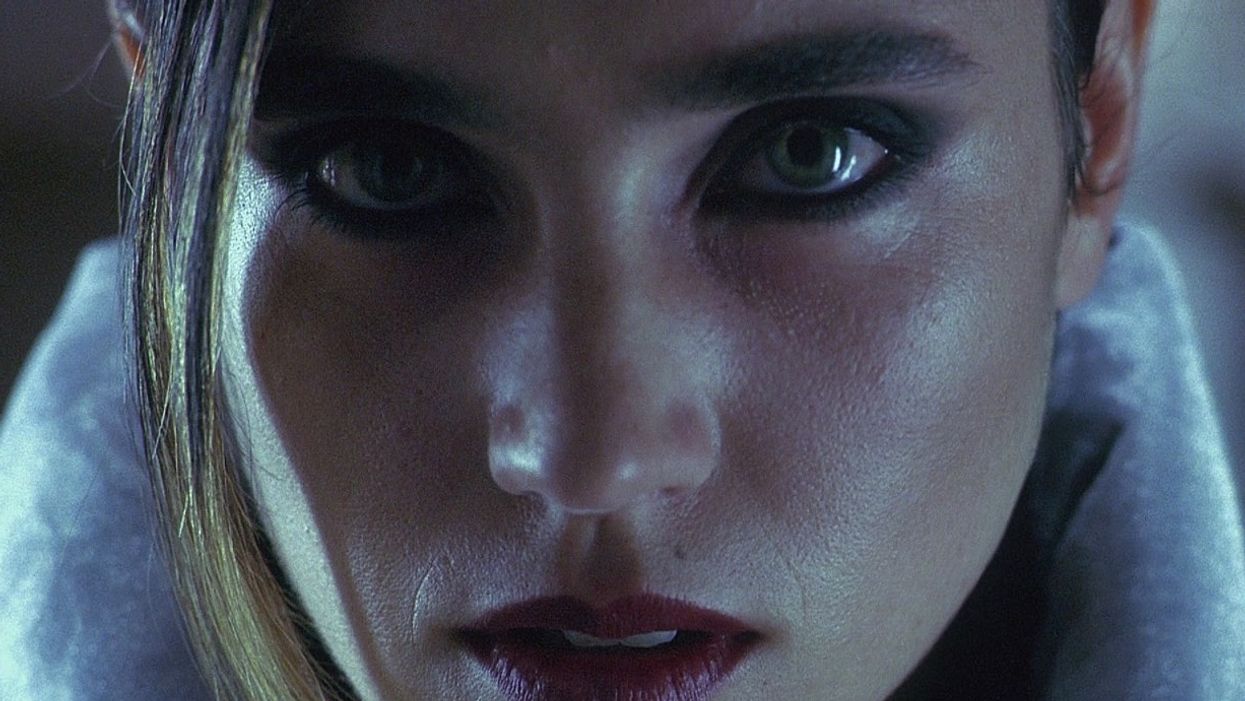Watch: 'Requiem for a Dream' Shows How Audacious Editing Can Drive a Story
Film editors usually take pains to make their work unobtrusive, but Requiem for a Dream's cutting style breaks the rules for a good reason.

Requiem for a Dream, Darren Aronofsky's 2000 adaptation of Hubert Selby's Jr. novel, is a film so unrelentingly grim that, though it is widely admired, I don't know many people who've sat through it more than once. The film captures the momentum of addiction in a cinematic way, through color, angle, and, more than anything, a cutting style that depicts the sensations of momentum, the subjective grip of addiction so vividly that it instantly became iconic (Last year, we wrote about a parody video that shoehorned the manic cutting onto other classic films.)
The typical 90-minute film averages between 600 to 700 cuts, whereas Requiem contains roughly 2,000 discreet edits.
In this essay, Mr Nerdista shows how Requiem's editing is its "beating heart," the key to its ferocity, and the reason that it's still difficult to watch.
Many films about the grimness of life tend to rely heavily on expository passages, on the telling rather the showing. This may be a clichéd observation, but so are the countless films where the story's theme is signposted with teary speeches about how some distant childhood trauma has caused the current situation, and then, you know, Everybody Hurts coos plaintive in the background and the end. What's much more difficult to pull off—and far more effective—is to follow Requiem's lead, in which the medium of cinema, in this case the cutting, tells the story, withouttelling the story. Below are some of the specific editing tactics that make the film so successful.
"Hip-Hop Montages"
As Mr Nerdista's video essay puts it, the edits "[tie] into the thematic overview of the film, as well as mirror character decisions." Here, showing addiction's recursive patterns of boredom and momentary rapture are infinitely more powerful than any speech could be. As he points out, "The typical 90-minute film averages between 600 to 700 cuts," whereas Requiem contains roughly 2,000 discreet edits. This is in part because Aronofsky wanted to incorporate what he called "hip hop montages," or sequences of narrative action (not just the drug clips below) that were cut in jagged rhythms to instrumentals.
"The quick cut editing of this film works as a means of unifying the stories," of the four main characters, played by Ellen Burstyn, Jared Leto, Marlon Wayans and Jennifer Connolly. As Nerdista puts it, "Every action that one takes in turn affects the other, and without the fast-paced editing, this consequence would be lost on the audience."
This marriage of form and function is key to why the film works so well: Aronofsky figured out how to depict the vicious patterns of addiction in a visceral, disorienting way, and more than that, he forces the viewer to "reflect on what they might be obsessed with" and what patterns they are living, by subtly signposting how much of our lives consist of repetition.
"Trapped in their story"
Aronofsky and editor Jay Rabinowitz employ more than just dizzying cuts to achieve their ends. At the beginning of the film, each scene averages 90 seconds to 2 minutes, but by the end, the film has careened into "scenes" that are often just seconds in length, jumbles of imagery (you can watch the final sequence here, but it's just way too grim and also, way too NSFW) that emphasize the degree to which, for the characters, who have throughout the film been linked through parallel editing, "time is of the essence, because they're on the brink of destruction."
"Time is of the essence, because they're on the brink of destruction."
And the audience, too, are "trapped in their story...their quest for satisfaction" that has led each into a darkness from which they may never return. In fact, according to Rabinowitz, (quoted in a brief snippet of interview) Aronofsky himself was "addicted to that sort of obsessive detail and specific focus, and that's something that served the film very well."
The other notable element mentioned in this essay is the extensive of the split screen, and its possible motivation, an example of which is below.
There is something in Requiem for a Dream that, unlike so many other films on addiction, sounds a dissonant, ringing chord in the mind that almost everyone can relate to in some way, because addiction is just the most extreme form of how our lives are patterns of recursive action, and not the linear causal dramas we wish. Requiem is, of course, profoundly causal; the tragedy (and the genius) of the work lies in the way Aronofsky and Rabinowitz depict the senselessness of it all, and they way the audience is denied the comfort of distance.
Through editing, the film takes a piece of the human condition and explodes it into an infinity of fractal shards, each shot a piece of a broken life, replete with decisions and their consequences. It's what makes the film art, and why this essay is particularly valuable for any filmmaker who has only seen it once, or never sat through this intensely difficult-to-watch masterpiece.
Source: Mr Nerdista












